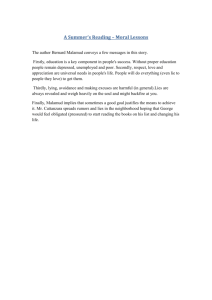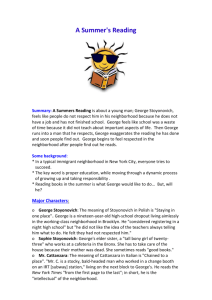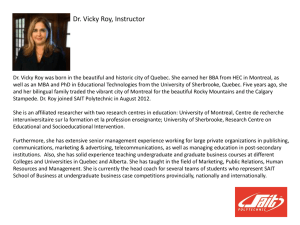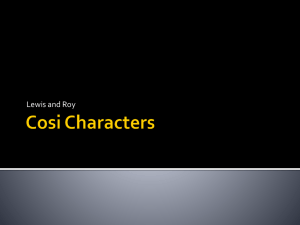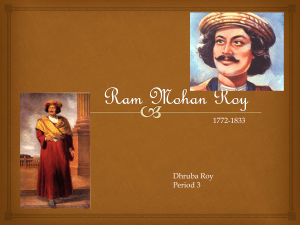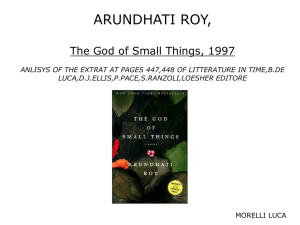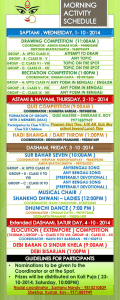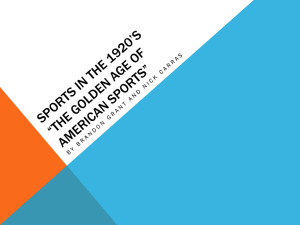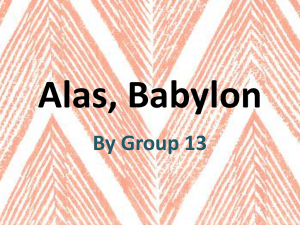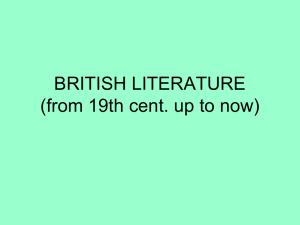Review & Discussion
advertisement
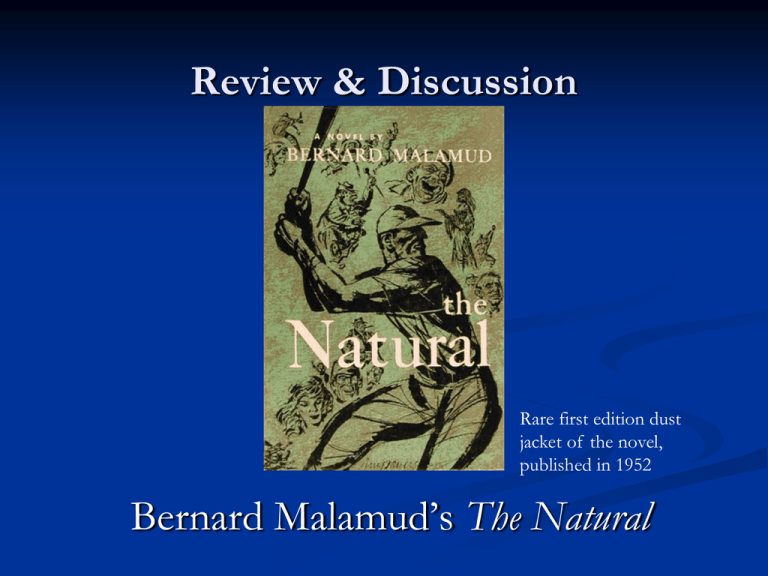
Review & Discussion Rare first edition dust jacket of the novel, published in 1952 Bernard Malamud’s The Natural Bernard Malamud, 1914-1986 Bernard Malamud was born in Brooklyn, New York, the son of Russian-Jewish immigrants. He grew up in humble circumstances, learning to love literature and the ‘National Pastime,’ baseball, especially as played by his home team, the Brooklyn Dodgers. Malamud attended the City College of New York and Columbia University. After earning his M.A., he worked as a night school teacher and later as an adjunct professor of composition, writing in his free time. In 1952, he published his first novel – The Natural. Literary Career & Reputation Malamud, at center, pictured with four other leading Jewish novelists of the 20 th Century: Franz Kafka, Grace Paley, Philip Roth, and Saul Bellow Though Malamud is most famous for The Natural, a book that avoids Jewish content or themes, his most highly regarded work describes the Jewish-American immigrant experience in the early to mid-20th century. His novels The Assistant (1957), about a Jewish Brooklyn grocer who takes in a dubious Italian-American assistant, and The Fixer (1967), about anti-Semitism in Tsarist Russia, are seminal works in the development of a Jewish-American literary tradition, whose most important writers are Malamud, Saul Bellow, and Philip Roth. The Natural & Arthurian Legend The Natural is an allegorical novel in which Bernard Malamud exploits the archetypes of Arthurian ‘Grail’ legend and transfers them to a modern setting, in which baseball players are quest heroes (the New York ‘Knights’), and the pennant stands in as the ‘Holy Grail.’ Grail Lore & Symbolism Like the quest knights of Arthurian legend who appear in early English poems and verse tales such as ‘Sir Gawain and the Green Knight’ and Malory’s ‘La Morte D’Artur,’ Roy is a Romantic hero involved in a quest and beset by obstacles— particularly, seduction by evil or morally corrupt women, a common trope in Romantic verse. Malamud imagined Roy Hobbs as a quest knight with mythical abilities. Like Arthur, Roy uses a special ‘weapon’—’Wonderboy,’ an apparently ‘magical’ bat with similar qualities and characteristics to Arthur’s ‘Excalibur,’ also known as ‘the sword in the stone.’ The ‘Fisher King’ Like Percival, one of the more prominent knights of grail lore, Roy is mentored by an ‘uncle-type’ figure—the team manager, Pop Fisher, who is modeled on ‘The Fisher King’: a wounded hero whose land (i.e., team) suffers along with his own afflictions, and who needs a hero to restore his health by discovering and claiming the Holy Grail. Left: Wilford Brimley as Pop Fisher in the film version of ‘The Natural’; right: an etching of the mythical Fisher King. ‘Based on a True Story?’ The character of Roy Hobbs is based mostly on three different real-life baseball players who symbolize the novel’s heroic and tragic themes. Ted Williams, the preeminent slugger during the era in which the novel was written and published, once famously claimed that he wanted to be remembered as ‘the best there ever was,’ and, in the eyes of many fans, he achieved this goal, but at a cost: his vaulting ambition reflected a difficult personality prone to ugly outbursts and surly relations with the baseball media, and though he was adored by fans, he had few friends and was often criticized by the press, despite his obvious gifts as a hitter. Based on a True Story, cont. Also present in Malamud’s tragic hero are echoes of Shoeless Joe Jackson, the star outfielder for the notorious 1919 Chicago ‘Black’ Sox—the White Sox squad who, heavily favored to win the World Series, lost in stunning fashion to the Cincinnati Reds. Eight White Sox players—including Jackson (who, like Williams would later be, was sometimes referred to as ‘The Natural’—were later exposed to have collaborated with a group of mob-connected gamblers to throw the Series and were permanently expelled from baseball. A widespread apocryphal anecdote describes Shoeless Joe emerging from the courthouse to be met by a young boy who said ‘Say it ain’t so, Joe!’ Based on a True Story, cont. The most curious and fascinating historical influence on Roy Hobbs’ character was a lesser known player. Eddie Waitkus was a decorated war hero and an emerging star for the Chicago Cubs in the late 40s. When he was traded to Philadelphia, a deranged female fan followed him there and shot Waitkus outside a hotel near the Jersey Shore, nearly killing him and cutting short his baseball career. Though Waitkus eventually recovered and returned to baseball, he never completely returned to form and retired as a case of unrealized potential. Other Influences/References Some of the details of Roy Hobbs’ character are also based on Babe Ruth; the character who most resembles Ruth, however, is Walter ‘The Whammer’ Wamboldt, whom Roy apparently eclipses in the pitcher vs. batter duel that precipitates Harriet Byrd’s attack on Roy. Most of the characters in the novel are based on either an historical or mythical counterpart (Judge Goodwill Banner = Judge Kennesaw Mountain Landis, who arbitrated the Black Sox Scandal in 1919; Harriet Bird = Lady Bercilak in Sir Gawain & the Green Knight, etc.). Herman ‘Babe’ Ruth The Natural and Heroic Epic Less prominent but nonetheless significant to the symbolic and thematic structure of the novel are allusions to Heroic Epic. When Roy meets Harriet Byrd on the train to Chicago, she asks him whether or not he has read Homer. Roy replies that the ‘only homer he’s heard of has four bases;’ Byrd goes on to compare modern-day athletes to the champions of the heroes of ancient wars described in Epic poetry. Left: Odysseus slays the suitors who have exploited his kingdom in The Odyssey. Right: The duel of Achilles and Hector in The Iliad. Major Themes Choices and Consequences Coping with Failure Good vs. Evil ‘The Divided Soul’ ‘The Integrity of the Game’ Robert Redford as Roy Hobbs in the film version, which notoriously alters the conclusion to turn Malamud’s tragic morality play into a rousing fairy tale of redemption and mythic glory. Style Allegory Realism vs. Fantasy Foreshadowing Allusion Glenn Close as Iris Lemon in the film version— when Iris is in the stands (dressed in virtuous, virginal white), Roy can’t miss. Paragraph Topics Write a short paragraph (150-250 words) on one of the following topics/themes from The Natural: The use of allegory/symbolism in the novel The evolution of the hero throughout the novel. Roy Hobbs’ relationship to the history of professional sports, from the 1919 Black Sox to the present
